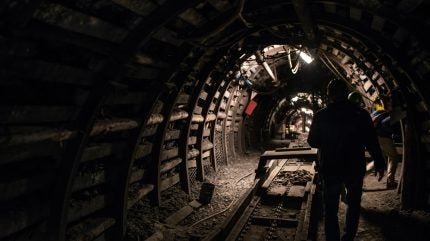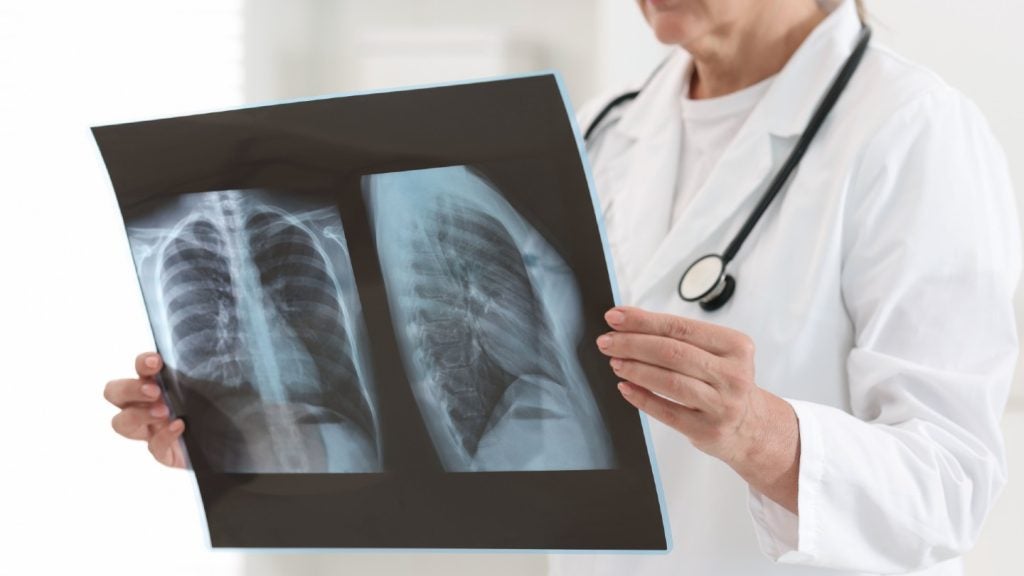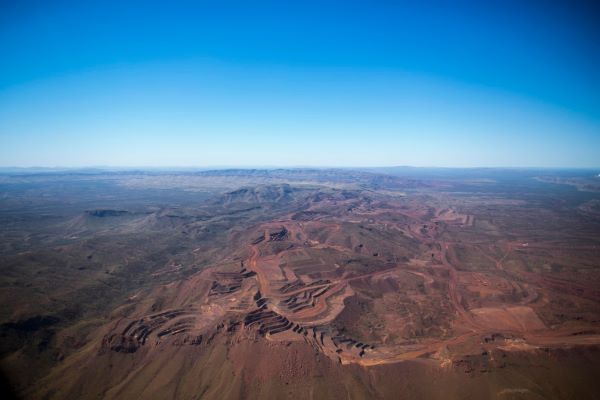
In the early-to-mid 20th century, in areas where mining dominated, it was common-place to have hospitals dedicated solely to treating the ailments and injuries of miners. Mining, back then, was especially back-breaking work, with few health and safety protections.
Today, the need for these specialist facilities is, thankfully, reduced, especially in developed countries where health and safety has come on leaps and bounds. Yet despite these advances, mining still carries a health burden, one that can be acutely felt by communities in regions with a concentration of mines, such as Utah in the US and the Pilbara in Australia.

Discover B2B Marketing That Performs
Combine business intelligence and editorial excellence to reach engaged professionals across 36 leading media platforms.
In these locations, clinics dedicated to treating miners can still serve a valuable purpose. One such facility is the Miners Hospital at the University of Utah. The state is ranked seventh for mineral production in the US. The current iteration of the hospital is in its 20th year, but the state-funded trust that finances its work is believed to have been set up in the early 1900s, around the time of the founding of the state itself, when mining was one of the predominant industries. Today, the hospital treats miners from across the state, 2,500 of them between 2019 and 2023.
Common mining-related health conditions
Mining is still ranked as one the most dangerous professions in the world.
“This is because the risk of acute injury working in a mine, whether above ground or below, is very unique compared to other physically demanding jobs,” says Dr Meredith Ehn, the medical director of the Mining Hospital at the University of Utah.
Common adverse occupational health impacts miners can experience include musculoskeletal conditions – shoulder, hip, knee or back pain – hearing loss and serious lung conditions.

US Tariffs are shifting - will you react or anticipate?
Don’t let policy changes catch you off guard. Stay proactive with real-time data and expert analysis.
By GlobalDataMusculoskeletal conditions are the most treated at the hospital. They can occur due to an injury – recent or past – or from chronic overuse and wear and tear from operating equipment and equipment vibration, which can cause trauma to the joints over time, says Ehn.
In fact, for lower back disorders, by incidence rate, mining is ranked the second highest behind the construction industry.
Musculoskeletal disorders can cause lost workdays averaging 51 days and a maximum of 900 days over a period of 13 years, according to a study of historic data.
Some of these injuries are preventable, others are not. “Any joint injury, bar a serious acute injury such as an equipment malfunction, is typically an accumulation of small or large injuries, plus genetics,” explains Ehn.
“For example, osteoarthritis is multifactorial, a combination of these factors, but we do see quite a high incidence rate in miners due to the demands of their jobs.”
For prevention it is important to consider proper lifting techniques, such as knowing how to position the back and how to protect the knees and shoulders. Caught early on, most musculoskeletal conditions are treatable with conservative measures like physiotherapy, medications, injections and activity modification, says Ehn.
The clinic, which treats active miners and those who are retired and now in their seventies and eighties, helps by not only treating these conditions at a first-rate facility, but ensuring the cost to the individual is significantly decreased.
The resurgence of lung conditions
Miners are also more commonly affected by pulmonary conditions, such as silicosis – a long-term lung disease caused by inhaling large amounts of crystalline silica dust – and coal workers’ pneumoconiosis (CWP), also known as ‘black lung’ disease.
CWP is most often caused by breathing in coal dust over a long period of time. Symptoms can take years to develop and include shortness of breath and chest tightness in the early stages, but can go on to affect other organs, such as the heart and brain due to a lack of oxygen intake over time.
It was thought the disease had been largely eradicated from mines in developed nations that have the highest health and safety standards. For example, prior to an investigation by the CWP Select Committee of the Queensland Parliament in Australia in 2017, it was widely accepted by coal mine operators, managers, workers and regulators that the disease no longer existed in the country.
However, the committee found there had been a “catastrophic failure”, at almost every level to protect the health and safety of coal workers in Queensland, and as a result of that failure, 21 Queensland coal miners were diagnosed with CWP.
The committee highlighted longwall mining, a productivity measure that involves mining a long wall of coal in a single slice, as a particular risk to dust exposure. As well as the fact that, at the time, there was no nationally agreed or statutory coal dust exposure limit for coal mines. This was later introduced and now, under the Coal Mine Workers’ Health Scheme, regular health assessments, including for lungs, are compulsory for Queensland coal mine workers.

Similarly, in the US, reported cases of black lung hit an all-time low at the end of the 20th century, but later rates started climbing again. Today, one in five coal miners in central Appalachia with at least 25 years of experience is reported to have black lung disease. In the US, black lung disease is most prevalent among coal counties, especially those that have maintained coal mining practises since the 1970s and 1980s, according to the US Department of Labor.
Under Mine Safety and Health Administration (MSHA) rules, coal miners who have already developed pneumoconiosis can exercise their right to continue working in healthier, more protective environments, with no reduction in pay. The MSHA says in recent years it has seen an increase in the number of miners exercising this right.
In June, the MSHA issued rules to reduce miners’ exposure to respirable crystalline silica and improved respiratory protection for all airborne hazards was introduced. Mining companies have 12–24 months to comply.
At the Utah mining hospital lung problems are one of the key conditions that doctors treat, says Ehn. However, she says it is hard to know why miners still suffer adverse lung health impacts in this day and age.
“What I can say is, despite the advances in personal protection equipment [PPE] over the decades, and despite rules and regulations that require people to wear PPE when they are underground, there is still a risk that occurs as a result of working in that environment.”
Accessing healthcare and improving outcomes
Another common condition associated with mining is hearing loss due to the amplified noise that occurs while working down in the mines. Other associated health issues have also been identified.
The Miner Health Programme in the US has found that miners are prescribed opioids more often, at higher doses and for longer durations than other workers. Miners also have among the highest rates of illicit opioid use compared with other workers. The programme is raising the need for opioid awareness and training for miners.
Further associated conditions include being overweight and at a higher risk of heart diseases due to coal dust exposure and mental health challenges. In Australia, there is an annual R U OK? Day on the 12 September to raise awareness of miners’ mental health.
A contributing factor making it harder to identify and treat health conditions early on, in order to prevent them worsening, could be an often-masculine culture where miners chose to just ‘get on’ with aches and pains. Often, there is also a lack of easy access to quality healthcare due to the remote location of mines in rural areas.

For example, a remote mining community in northern Western Australia near Pilbara mines has complained about frequently being forced to travel hours to access health services that are not offered at their local hospital. Rio Tinto recently said it will invest $40m through the Resources Community Investment Initiative towards the redevelopment of two hospitals in the region.
Ehn says almost all the miners who access her clinic live in remote rural areas and are typically travelling three to four hours to visit. The hospital is actively trying to raise awareness of its services to miners by visiting mining communities and mine sites. Mining companies are generally very interested in having physicians visit, she says.
With more funding, it could be possible to have GPs or primary physicians be part of the programme, which could reach many more miners, she says.
It is clear there is still a great need to understand and treat the the impact of mining on workers’ health, as well as a need for more awareness of the associated risks – but it may never be possible to erase them altogether.
“I cannot think of another industry where, on a daily basis, despite all of the safety checks that are put in place, people are still in danger of ceiling or wall collapse, explosion, fire – those things are very, very unique to mining,” says Ehn.
“Just because there have been significant improvements in occupational health and safety over the past few decades, the inherent nature of mining, being underground and in an enclosed environment, means it is still very high risk,” she concludes.





